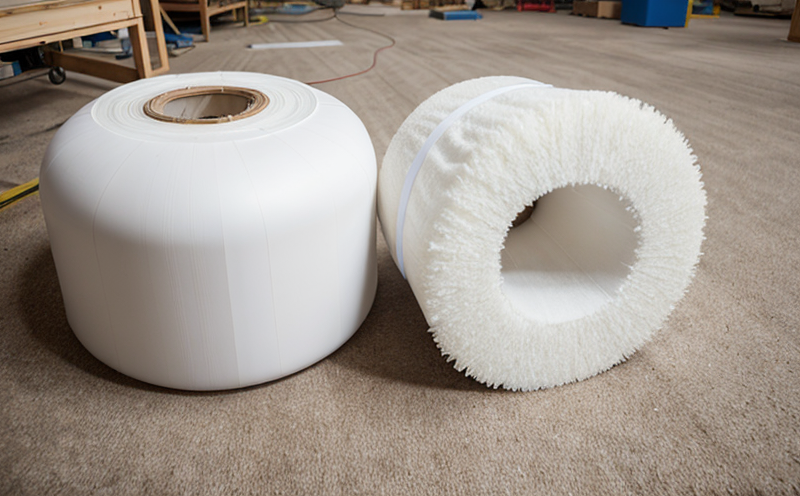ISO 10140-2 Building Element Sound Insulation Testing
The ISO 10140-2 standard is a critical part of acoustic materials and insulation testing, particularly in the context of building elements. This service ensures that sound insulation performance of walls, floors, partitions, and roofs complies with specified design parameters.
Building designers and constructors often face challenges ensuring sound insulation meets regulatory standards and client expectations. ISO 10140-2 provides a standardized method for assessing the airborne noise reduction (NR) values of building elements under controlled laboratory conditions. This test is essential in verifying that constructed buildings meet acoustic performance requirements set by international and local regulations.
During testing, specimens are subjected to standard sound pressure levels from both side A and side B of the element being tested. The NR value is calculated based on the difference between these pressures. Compliance with this standard ensures a reduction in noise transmission through building elements, enhancing overall acoustic comfort within spaces.
The significance of accurate sound insulation testing cannot be overstated, especially in densely populated urban areas where minimizing unwanted noise transfer is paramount for occupant well-being and productivity. This service supports quality managers, compliance officers, R&D engineers, and procurement teams by providing reliable data that can influence design decisions, material selection, and construction practices.
Our laboratory adheres strictly to the ISO 10140-2 protocol, ensuring that all tests are conducted in a manner consistent with international best practices. This consistency guarantees accurate, repeatable results that are recognized globally. By leveraging our expertise and state-of-the-art facilities, we provide clients with comprehensive reports that detail not only test outcomes but also recommendations for improvement where necessary.
Understanding the nuances of this standard helps stakeholders appreciate its role in creating quieter, more comfortable environments. For instance, understanding how sound travels through different materials aids architects and engineers in selecting appropriate solutions early in the design process.
The importance of acoustic performance in buildings extends beyond comfort; it also impacts energy efficiency by reducing heating and cooling demands associated with maintaining consistent interior temperatures. Additionally, proper insulation can extend the life of building structures by minimizing moisture transfer, which is crucial for preventing mold growth and structural deterioration.
Applied Standards
| Standard | Description |
|---|---|
| ISO 10140-2:2016 | Airborne sound insulation of building elements – Part 2: Laboratory measurement using swept sine wave vibration excitation. |
Scope and Methodology
The scope of ISO 10140-2 testing includes the evaluation of sound insulation properties for various types of building elements, such as walls, floors, partitions, and roofs. The methodology involves placing the specimen between two chambers where controlled sound levels are generated using a swept sine wave signal.
Specimen preparation is critical; it requires careful selection based on intended use and location within the structure. Properly cut samples must be free from defects that could affect test results. Once prepared, they undergo calibration checks before being placed between the chambers.
The testing process involves applying a specified sound pressure level at one end while measuring the resulting sound levels at the other end. The difference between these measured values gives the NR value which indicates effective noise reduction achieved by the specimen. Compliance thresholds vary depending on application; for example, floor-ceiling assemblies typically require higher ratings than partitions.
Post-test analysis includes detailed reporting that outlines performance metrics alongside visual aids like graphs and charts to facilitate easy interpretation of results. This documentation serves as valuable reference material not just during construction but also throughout the lifecycle of the building.
Customer Impact and Satisfaction
- Ensures regulatory compliance through rigorous testing protocols.
- Supports informed decision-making by providing accurate data on material performance.
- Facilitates continuous improvement initiatives aimed at enhancing acoustic comfort within buildings.
- Achieves peace of mind for developers, owners, and tenants regarding noise control.
- Maintains high standards of product quality across diverse markets.





